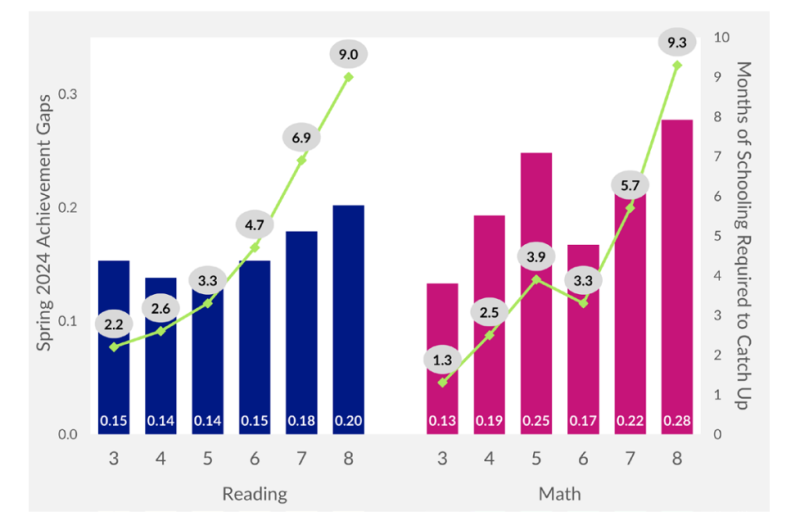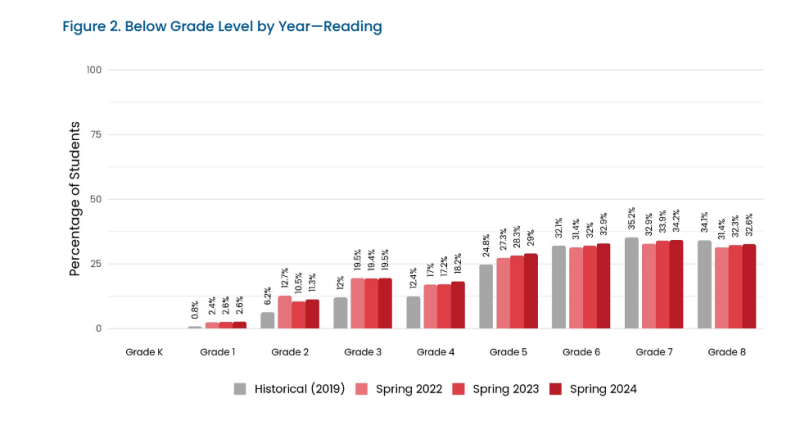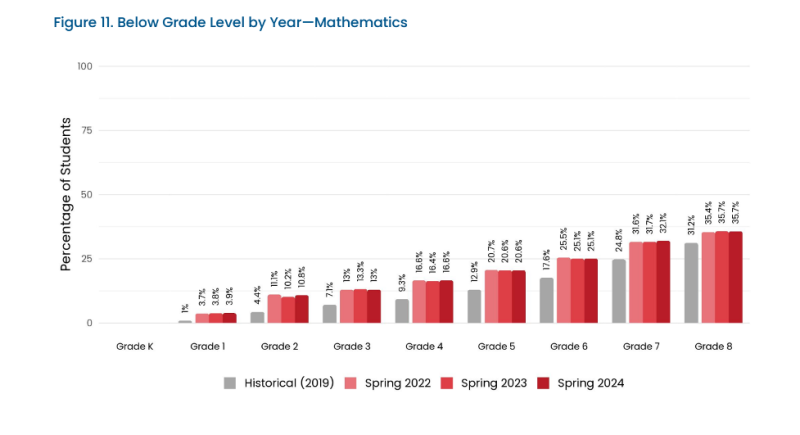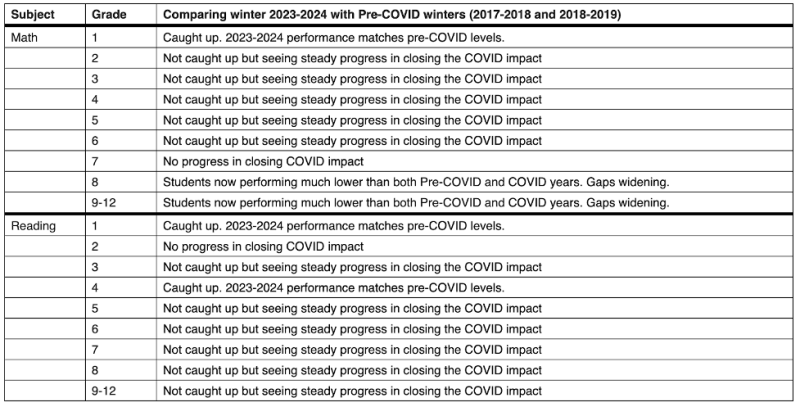Curriculum Associates didn’t detect as a lot deterioration as NWEA, however did discover widespread stagnation in 2023-24, in accordance with a report launched on August 19, 2024. Their researcher Kristen Huff described the numerical variations as tiny ones that must do with the truth that these are completely different checks, taken by completely different college students and use completely different strategies for crunching the numbers. The primary takeaway from all of the reviews, she stated, is identical. “As a nation, we’re nonetheless seeing the lasting impression of the disruption to education and studying,” stated Huff, vp of evaluation and analysis at Curriculum Associates.
Briefly, kids stay behind and haven’t recovered. That issues for these kids’s future employment prospects and lifestyle. Finally, a much less productive labor pressure may hamper the U.S. economic system, in accordance with projections from economists and consulting corporations.
It’s vital to emphasise that particular person college students haven’t regressed or don’t know much less now than they used to. The typical sixth grader is aware of extra at this time in 2024 than she or he did in first grade in 2019. However the tempo of studying, or charge of educational development, has been rocky since 2020, with some college students lacking many months of instruction. Sixth graders in 2024, on common, know far lower than sixth graders did again in 2019.
Renaissance, a 3rd firm, discovered a mottled sample of restoration, stagnation and deterioration relying upon the grade and the topic. (The corporate shared its preliminary mid-year outcomes with me by way of e mail on Aug. 14, 2024.) Most regarding, it discovered that the maths abilities of older college students in grades eight to 12 are progressing so slowly that they’re even additional behind than they have been after the preliminary pandemic losses. These college students have been in grades 4 via eight when the pandemic first hit in March 2020.
On the brilliant aspect, the Renaissance evaluation discovered that first grade college students in 2023-24 had utterly recovered and their efficiency matched what first graders used to have the ability to do earlier than the pandemic. Elementary college college students in grades two to 6 have been making gradual progress, and remained behind.
Curriculum Associates pointed to 2 sudden vivid spots in its evaluation outcomes. One is phonics. On the finish of the 2023-24 college yr, practically as many kindergarteners have been on grade stage for phonics abilities as kindergarteners in 2019. That’s 4 out of 5 kindergarteners. The corporate additionally discovered that colleges the place the vast majority of college students are Black have been exhibiting comparatively higher catch-up progress. “It’s small, and disparities nonetheless exist, nevertheless it’s an indication of hope,” stated Curriculum Associates’s Huff.
Listed below are three charts and tables from the three completely different testing firms that present completely different snapshots of the place we’re.




Understanding why restoration is stagnating and generally worsening over the previous yr is troublesome. These check rating analyses don’t supply explanations, however researchers shared a variety of theories.
One is that after college students have a number of holes of their foundational abilities, it’s actually exhausting for them to be taught new grade-level subjects every year.
“I feel it is a drawback that’s rising and constructing on itself,” stated NWEA’s Lewis. She cited the instance of a sixth grader who continues to be struggling to learn. “Does a sixth-grade instructor have the identical abilities and instruments to show studying {that a} second or third grade instructor does? I doubt that’s the case.”
Curriculum Associates’s Huff speculated that the entire classroom modifications when a excessive proportion of scholars are behind. A instructor could have been in a position to give extra particular person consideration to a small group of scholars who’re struggling, nevertheless it’s more durable to take care of particular person gaps when so many college students have them. It’s additionally more durable to maintain up with the normal tempo of instruction when so many college students are behind.
One highschool math instructor informed me that she thinks studying didn’t recuperate and continued to deteriorate as a result of colleges didn’t rush to fill the gaps immediately. This instructor stated that when in-person college resumed in her metropolis in 2021, directors discouraged her from reviewing previous subjects that college students had missed and informed her to maneuver ahead with grade-level materials.
“The phrase that was going round was ‘acceleration not remediation’,” the instructor stated. “These youngsters simply missed 18 months of faculty. Possibly you are able to do that in social research. However math builds upon itself. If I miss sixth, seventh and eighth grade, how am I going to do quadratic equations? How am I going to issue? The worst factor they ever did was not present that remediation as quickly as they walked again within the door.” This educator stop her public college educating job in 2022 and has since been tutoring college students to assist them catch up from pandemic studying losses.
Power absenteeism is one other huge issue. Should you don’t present as much as college, you’re not prone to catch up. A couple of in 4 college students within the 2022-23 college yr have been chronically absent, lacking a minimum of 10% of the college yr.
Deteriorating psychological well being can also be a number one concept for varsity struggles. A research by researchers on the College of Southern California, launched Aug. 15, 2024, documented widespread psychological misery amongst teenage women and preteen boys because the pandemic. Preteen boys have been prone to wrestle with hyperactivity, inattentiveness and conduct, corresponding to shedding their mood and preventing. These psychological well being struggles correlated with absenteeism and low grades.
It’s simple to leap to the conclusion that the $190 billion that the federal authorities gave to varsities for pandemic restoration didn’t work. (The deadline for signing contracts to spend no matter is left of that cash is September 2024.) However that doesn’t inform the entire story. Many of the spending was focused at reopening colleges and upgrading heating, cooling and air air flow methods. A a lot smaller quantity went to educational restoration, corresponding to tutoring or summer time college. Earlier this summer time two separate teams of educational researchers concluded that this cash led to modest educational beneficial properties for college students. The issue is that a lot extra continues to be wanted.
[ad_2]
